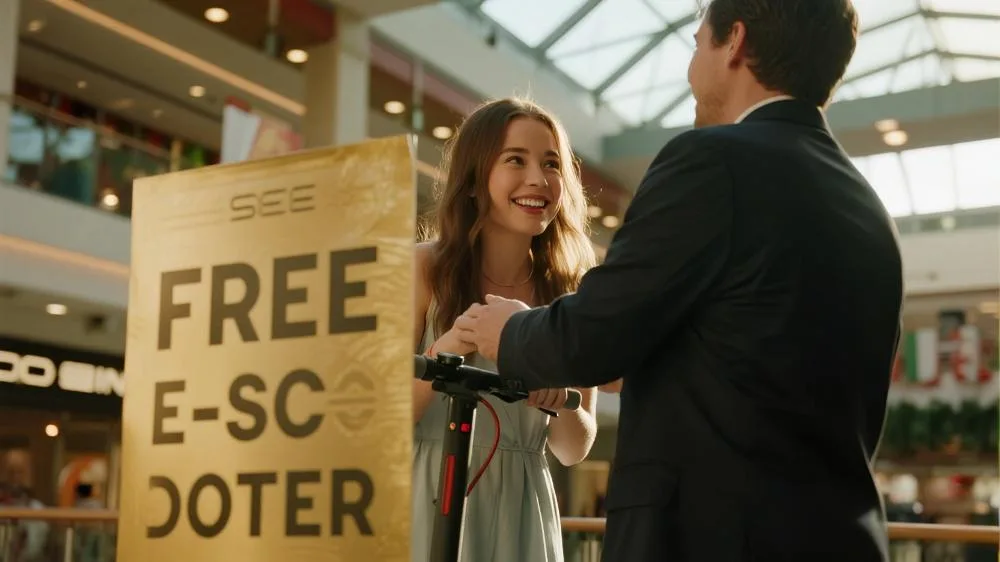how to get a free e-scooter

As environmental awareness grows and urban traffic congestion worsens, electric scooters have become the preferred choice for short-distance travel in European and American cities. According to the latest 2025 report from the EU Urban Transport Institute, e-scooter usage for commutes under 5 kilometers has reached 37%, nearly triple the 2020 figures. A survey by professional content platform Novascooter reveals that 68% of potential users consider “purchase cost” as the primary barrier to ownership. How to get a free e-scooter? This comprehensive guide details seven legitimate ways to obtain free electric scooters, from government subsidy programs to innovative sharing models, helping budget-conscious users enjoy convenient micro-mobility solutions.

In-Depth Analysis of Government Eco-Subsidy Programs
In 2025, the EU’s “Green Urban Mobility” fund allocated €800 million to promote micro-mobility vehicles like e-scooters. Paris’s “Clean Air Replacement” initiative stands out, offering up to €500 for citizens who trade in gasoline-powered motorcycles. The application process involves three key steps: completing an online form, scheduling an appraisal at designated service centers, and finally purchasing from partnered retailers. The entire procedure typically takes 10-15 working days.
Germany has implemented a tiered subsidy system. Berlin’s transport authority offers three levels: €300 for basic models (requiring 3-month usage proof), €450 for commuter versions (for users traveling over 10km daily), and full subsidies for special needs cases. Notably, most subsidies follow a “purchase-then-reimburse” model where users must first pay out-of-pocket before claiming refunds.
London’s program specifically targets public service workers. NHS staff, teachers, and firefighters can apply for the “Essential Worker Green Pass,” receiving 50% subsidies (capped at £400). Successful applicant Nurse Emma Clark shared: “The process took just 12 working days from submission to approval, much smoother than expected.”
Corporate Partnerships and Promotional Opportunities
Brand marketing campaigns present excellent opportunities for free e-scooter access. Lime’s 2025 “City Explorer” program recruits 800 testers across 25 cities for 6-9 months of free usage. Applicants must showcase creative commuting solutions on social media and submit monthly usage reports. Data shows Instagram users with 3,000+ followers have significantly higher acceptance rates.
The brand ambassador program is another valuable avenue. Segway-Ninebot annually selects 150 “Product Champions” who receive latest models. 2025 requirements include posting two monthly usage videos and attending one offline event. Former ambassador Lisa Young advises: “Authentically demonstrating how you solve daily commute problems outperforms stunt-focused applications.”
Advertising sponsorship models have evolved in 2025. Bird’s “Mobile Ad Platform” lets users offset costs by displaying ads. Full-wrap ads require 15 monthly riding hours, while partial ads need just 8. The system automatically optimizes ad routes to minimize disruption to normal travel.
Academic Research and Urban Pilot Programs
University transportation studies often go unnoticed by general users. ETH Zurich’s “Micro-Mobility Behavior Research” offers 18 months of free usage in exchange for installing a data-collection app tracking routes and speeds. Researchers particularly seek participants aged 35-50, currently underrepresented in the study.
Delft University’s “Smart Infrastructure” project involves testing advanced charging stations and dedicated lanes using sensor-equipped scooters. While technically demanding, successful participants keep the €1,800 test units. Coordinator Van der Hooven notes: “We prioritize applicants with diverse routes, especially suburban commuters.”
Municipal pilot programs also warrant attention. Amsterdam’s “Last Mile” initiative provides free scooters to citizens who complete quarterly surveys. Unlike other programs, it specifically welcomes first-time users for their fresh perspectives.
Secondhand Market and Circular Economy Solutions
The certified refurbished market has matured significantly by 2025. Xiaomi-authorized stores offer 12-month warranties at 40-60% of retail prices. London refurbishment manager Wang Wei advises focusing on three components: battery health (≥80% capacity), motor condition (no abnormal noise), and frame integrity. “End-of-quarter purchases often yield extra discounts,” he adds.
DIY assembly suits technically-inclined users. Novascooter’s guides show 50-70% savings using secondhand parts. Critical considerations include battery-controller compatibility, motor-frame matching, and charger safety standards. Manchester enthusiast James shares: “My £200 custom build performs comparably to mid-range commercial models.”
Trade-in programs have become more flexible. Multiple brands now accept non-proprietary scooters for €100-300 credits. Some retailers even offer “upgrade installment plans,” applying trade-in value as down payments with 12-month interest-free financing.
